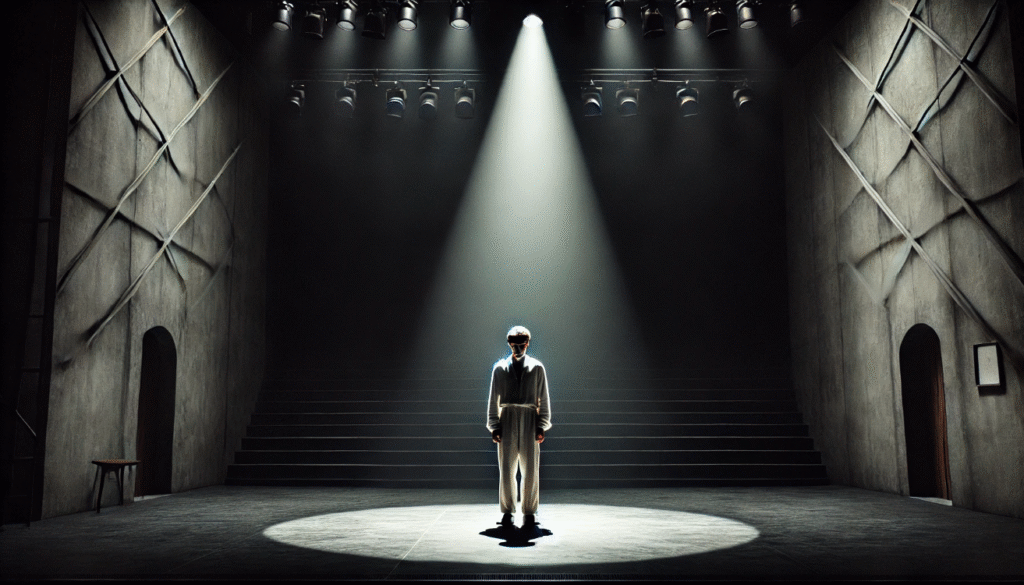 The impact of soliloquies on narrative structure plays serve as a window into the inner thoughts and emotions of the characters. They are pivotal in revealing the true intentions, desires, and conflicts of the characters, thus shaping the plot and character development. The impact of soliloquies on narrative structure of the plays is crucial in creating a framework for the soliloquies to unfold, allowing the audience to gain insight into the characters’ motivations and internal struggles. Through the impact of soliloquies on narrative structure, the audience is able to better understand the complexities of the characters and their role in driving the plot forward. Therefore, soliloquies play a crucial role in unraveling plot and character through their impact on narrative structure.
The impact of soliloquies on narrative structure plays serve as a window into the inner thoughts and emotions of the characters. They are pivotal in revealing the true intentions, desires, and conflicts of the characters, thus shaping the plot and character development. The impact of soliloquies on narrative structure of the plays is crucial in creating a framework for the soliloquies to unfold, allowing the audience to gain insight into the characters’ motivations and internal struggles. Through the impact of soliloquies on narrative structure, the audience is able to better understand the complexities of the characters and their role in driving the plot forward. Therefore, soliloquies play a crucial role in unraveling plot and character through their impact on narrative structure.
Understanding Soliloquies in Shakespeare’s Plays:
The impact of soliloquies on narrative structure is a dramatic device used in plays where a character speaks their thoughts out loud, usually when they are alone on stage. It is a way for the character to reveal their innermost thoughts, feelings, and motivations to the audience. In Shakespeare’s plays, soliloquies are often used to provide insight into a character’s psyche, to advance the plot, and to engage the audience in a deeper understanding of the character’s motivations and struggles. They are a powerful tool for character development and for conveying the themes and ideas of the play. Soliloquies are distinct from other forms of dialogue, such as monologues and asides.
Soliloquies as a Tool for Plot Advancement:

Soliloquies play a crucial role in revealing key plot developments in literature and drama. They provide an opportunity for characters to express their inner thoughts and feelings directly to the audience, offering insight into their motivations and emotions. One classic example of a soliloquy that moves the plot forward is Hamlet’s famous “To be or not to be” soliloquy, in which he contemplates the nature of existence and his own internal struggle. Soliloquies also create tension, suspense, and anticipation by allowing the audience to witness the character’s internal conflict and decision-making process.
Soliloquies and Character Development:

Soliloquies, or the act of a character speaking their thoughts aloud when they are alone on stage, provide a unique window into a character’s psychology. These monologues allow the audience to gain insight into a character’s motivations, emotions, and inner conflicts in a way that dialogue with other characters cannot. Through soliloquies, audiences can understand the depth of a character’s thoughts and feelings, as well as the reasons behind their actions. Key soliloquies in literature, such as Macbeth’s soliloquies on ambition and Lady Macbeth’s soliloquy on guilt, reveal the complexities of these characters.
Soliloquies and Internal Conflict:

Soliloquies are often used in literature to give the audience insight into a character’s internal struggles and dilemmas. This is particularly true in the case of characters facing moral or existential crises, such as Hamlet’s famous conflict with revenge. Through soliloquies, audiences are able to understand the complexities of a character’s inner turmoil and relate to their struggles on a more personal level. By allowing the character to speak directly to the audience, soliloquies create a sense of intimacy and empathy, making the character’s internal conflicts more relatable and engaging for the audience.
Soliloquies and the Narrative Structure:
Soliloquies play a crucial role in shaping the narrative structure of a play. They allow characters to express their inner thoughts and feelings directly to the audience, providing insight into their motivations and emotions. This form of direct address breaks the fourth wall, creating a sense of intimacy and connection between the character and the audience. Furthermore, soliloquies can impact the pacing and rhythm of the story, as they often serve as moments of reflection or introspection for the character. This can create a natural ebb and flow in the narrative, adding depth and complexity to the overall structure of the play. In addition, soliloquies can also have a significant impact on the tone and mood of the play.
Examples of Soliloquies Influencing the Plot and Structure:

Soliloquies are important moments in plays where a character speaks their thoughts aloud, usually while alone on stage. In “Hamlet,” the famous “To be, or not to be” soliloquy is a contemplation on life and death, showcasing Hamlet’s internal struggle and existential crisis. In “Macbeth,” the soliloquy before the murder of King Duncan reveals the character’s ambition and guilt, setting the stage for the tragic events that follow. In “Othello,” the titular character’s soliloquy about the handkerchief symbolizes his growing jealousy and mistrust, leading to the tragic downfall of both Othello and Desdemona.
Soliloquies play a crucial role in shaping the unfolding of events and enhancing the narrative structure in a literary work. They provide insight into a character’s inner thoughts and emotions, allowing the audience to better understand their motivations and decisions. Additionally, soliloquies often serve as turning points in the plot, driving the story forward and bringing about significant changes in the narrative. One example of a soliloquy that impacts the unfolding of events and enhances the narrative structure is Hamlet’s “To be, or not to be” soliloquy in Shakespeare’s play “Hamlet.” In this soliloquy, Hamlet contemplates the nature of life and death, expressing his inner turmoil and indecision.
Comparative Analysis: Soliloquies in Shakespeare’s Tragedies vs. Comedies

Soliloquies in tragedies often serve to reveal the inner thoughts and conflicts of the main character, adding depth to the narrative and providing insight into their motivations and struggles. In contrast, soliloquies in comedies are often used for comedic effect, breaking the fourth wall and involving the audience in the humor of the story. While both types of soliloquies can add complexity and depth to the narrative structure, they serve different purposes in tragedies versus comedies.
Case studies:

Soliloquies play a significant role in both Hamlet and A Midsummer Night’s Dream in terms of character development and plot progression. In Hamlet, the soliloquies provide insight into the protagonist’s inner thoughts, conflicts, and emotions, allowing the audience to better understand his complex character. These soliloquies also drive the plot forward by revealing Hamlet’s motivations and intentions. On the other hand, in A Midsummer Night’s Dream, the soliloquies serve a similar purpose in terms of character development, providing the audience with a deeper understanding of the characters’ desires, fears, and motivations.
Soliloquies play a central role in shaping narrative structure by allowing characters to express their inner thoughts and feelings directly to the audience. This provides insight into their motivations, desires, and conflicts, and helps to drive the plot forward. In Shakespeare’s works, soliloquies have had a lasting impact on storytelling technique, as they effectively create a sense of intimacy and emotional connection between the character and the audience. Today, soliloquies remain a vital tool for playwrights and storytellers, as they continue to provide a powerful means of conveying a character’s inner turmoil and driving the narrative forward. They offer a unique opportunity for characters to reveal their true selves and engage the audience in a more personal and direct way.













